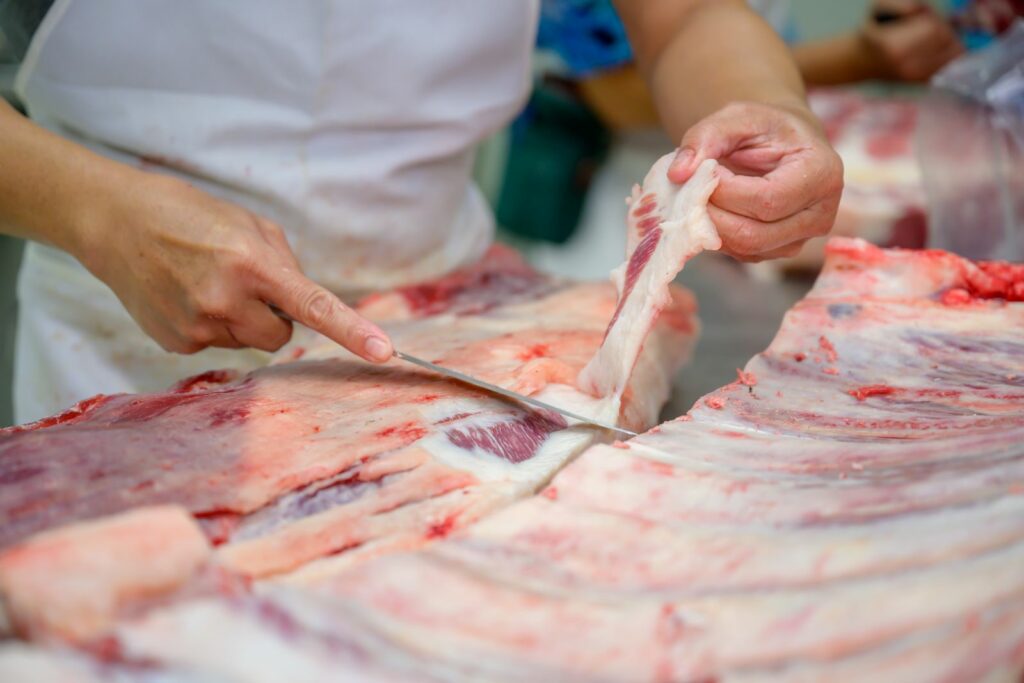Cattle prices soar to unexpected heights breaking seasonal record
15th March 2023
Latest figures from Quality Meat Scotland (QMS) have revealed prime cattle prices reached record high levels at Scottish abattoirs in February, despite the trend being a reduction in prices for this time of year.
In the week ending February 25th, R4L steer prices were up 18.5% compared to the same week last year and 30% compared to the five-year average, reaching 489.2p/kg deadweight (dwt). Iain Macdonald, QMS market intelligence manager, said it is unusual for prices to be rising at this time of year.
“Indeed, between 2010 and 2022, R4L steer prices were lower in the eighth week of the year than in the first week of the year on 10 of 13 occasions. In addition, only in 2012 was the price at its highest of the year so far in week eight. Over the 13 previous years, there was an average reduction of 1.5% for the period but this year prices jumped 6% higher.
“In Scotland, prime cattle prices have been rising despite weekly prime cattle slaughter being seasonally firm, running above its 2022 weekly average level, with spring-born cattle from 2021 reaching peak slaughter age,” he added.
Meanwhile, the latest data from the British Cattle Movement Service (BCMS) revealed a significant year-on-year reduction in slaughter-age cattle on Scottish farms for January 2023.
The combined number of beef-sired cattle and dairy-sired males on Scottish holdings aged 12-29 months was down by 3.3% on the previous year, driven by an increased outflow of store cattle to England since autumn 2021.
In contrast, BCMS data has shown a continuing year-on-year increase in prime cattle availability at GB level in 2023. However, while numbers were 2.7% higher across the 12-29-month age group this year, lighter carcase weights mean that abattoirs aiming to produce the same volume of beef will need to compete for more prime cattle.
Mr Macdonald noted that even the significant uplift in total UK beef production (once an increased cow kill has been factored in) didn’t prevent cow prices from reaching record highs.
“Though, in the calendar year of 2022, the volume of beef added to the UK market still fell by 1%, following on from a 2% reduction in 2021, so this rebound in supply in the final quarter is likely to have been insufficient to replenish tight market supplies,” he added.
The issue is compounded by the UK market is facing external price shocks from the EU and global beef market, where a tight balance between supply and demand has been forcing prices up.
In the final quarter of 2022, the average price per tonne of UK beef exported was up nearly 22% year-on-year, while imports to the UK were priced 10% higher than in late 2021.
Declining national herd set to cause tight supplies
In October 2022, there was an 8% year-on-year reduction in beef-sired females aged 24-29 months on farm in Scotland, meaning that there were fewer replacements available to add to the herd.
The breeding herd in England and Wales was also significantly down on the previous year in January, with a 2.8% reduction in beef-sired females aged 30 months and over.
While the decline has slowed slightly over the past year, the beef herd has reduced at a faster pace in England and Wales than in Scotland over the longer term. Compared to the start of 2018, the number of beef-sired females aged 30 months and over on farm in Scotland was down by 7.9% compared to a fall of 10.7% across England and Wales.
“This steeper contraction in the suckler herd in recent years in England & Wales is likely to have been supporting the demand for Scottish-born store cattle, especially given that the beef herd accounted for a much smaller 43% of the total breeding cow herd in England & Wales at the beginning of 2023 compared to almost 73% in Scotland,” Mr Macdonald remarked.
Last year, the number of cattle aged under 30 months moving from farms in Scotland to farms in England & Wales rose by 35% on 2021 and by 42% above the five-year average.
Although the pace of increase slowed in the second half of the year, this was partly due to a higher base from autumn 2021. Thus, the outflow would still be enough to reduce the prime cattle kill in Scotland by around 2% in the first half of 2023 compared to a scenario of unchanged moves.
“This helps explain why prime cattle availability in Scotland is set to remain tight in the first half of 2023 despite increased calf registrations in 2021,” Mr Macdonald said.
“Looking further ahead, the decline in the breeding herd seen in 2022 is likely to have an impact on calf registrations in spring 2023, with its peak impact on prime cattle availability then occurring in the first quarter of 2025 when these calves reach peak slaughter age at just under two years old.
“However, a reduced breeding herd across GB means that store cattle availability is set to tighten further in autumn 2023 and spring 2024,” he concluded.

